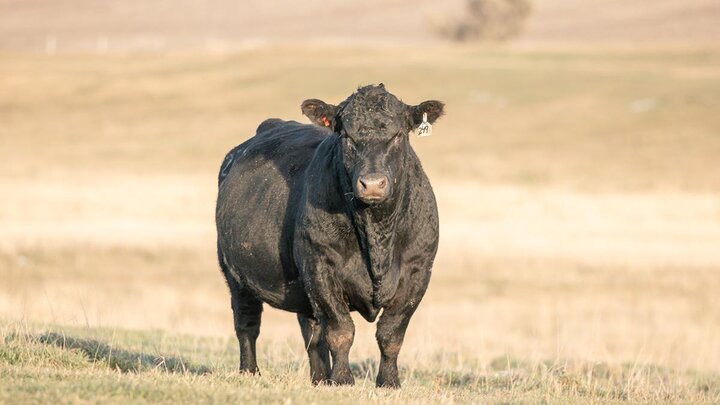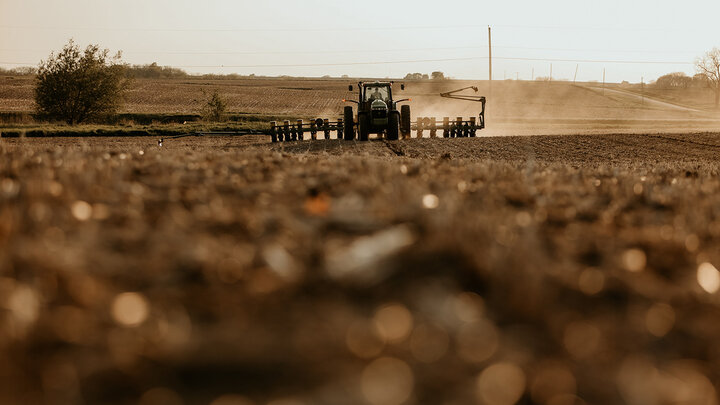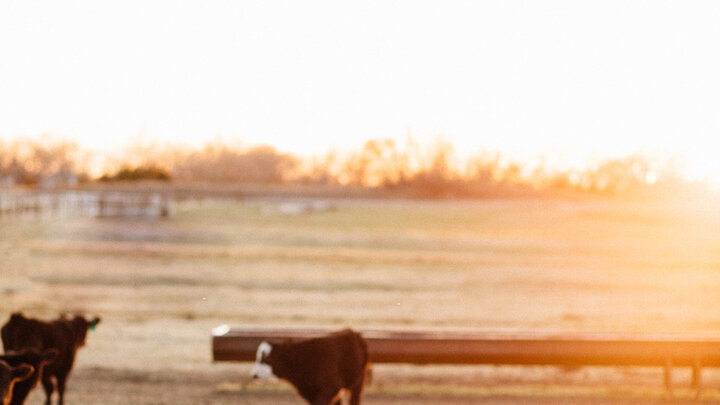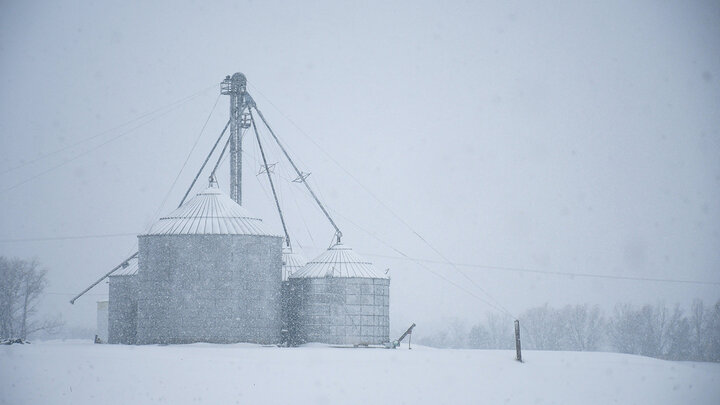It is often recommended that ranchers stock at a moderate stocking rate to avoid overgrazing and to manage for dry conditions. However, during severe multiyear droughts, even moderately stocked rangelands become overstocked, and managers are forced to sell breeding stock to adapt. Depending on market conditions during and after drought, liquidating breeding stock can have significant financial impacts on the operation. Developing plans that provide for interannual variability can give producers the opportunity to take advantage of above average years and prompt action in poor years.
Stocking rate is defined as the number of animals on a given piece of pasture for a given amount of time, often expressed as animal unit months (AUM). One AUM is equivalent to 780 pounds of air-dry forage, the amount of feed required by a thousand-pound cow with a young calf for a month. This gives us three places to change our stocking rate: the animal, the forage resource (pasture size) and the length of time.
Changing and/or diversifying class of animal is one way to build flexibility into stocking rates. For cow-calf producers an example of this may be keeping a cow herd that is stocked at a level close to the lowest production drought years to prevent loss of investment in the cow herd. Using weather and forage forecasting tools such as the NOAA Climate Prediction Center season forecasts and GrassCast, producers can plan to add more animal units during higher production years by adding a stocker cattle enterprise to the operation. Multi species grazing is another way to increase animal units in a grazing system that do not directly compete for all forage resources, allowing better utilization of forage resources across the pasture (especially native range).
Custom grazing options also allow greater flexibility than owned herds, as it is possible to take in different numbers of animals across years depending on forage resources. Animal size plays a key role in forage demand as larger animals eat more than smaller ones. Understanding how animal size affects intake can be critical if bringing in growing animals, as they require more feed throughout the grazing season. Larger cows/pairs also require more feed resources, which should be factored into custom grazing contracts.
Forage resources can be adjusted in many ways to add flexibility into an operation. Using different grazing systems such as a rest rotation or a deferred rotation system can build a bank of grass in the grazing system that can be utilized in poor years. If a producer owns their pasture, they may find it advantageous to lease out excess pasture in good years and retain pasture in poor years. This allows them to take see lease income in good years and maintain a core herd through poor years. On the other hand, if a majority of pasture is leased it may be possible to sublease pasture during good years and retain lease ground for personal use during poor years or try to obtain more resources such as lease more pasture, lease cornstalks, or buy feed. Cover crops can also be a valuable forage resource if infrastructure is available.
Systems can also be built that are time flexible. Including stocker cattle in an operation is one option, as stocker cattle are a more liquid asset than cows. This means that they can easily be sold when forage resources run out. Early weaning calves can save approximately 10 pounds of forage per cow, per day and allow calves to be marketed earlier, reducing forage demand. Calves can be weaned as early as 90 days; however, they may require increased management if retained. When forage resources are short, pregnancy checking may be more important than normal as it identifies open animals and can identify late-calving cows, whose calves will be lighter, allowing producers to make early culling decisions. This can affect pasture use as well as winter feed cost. There may also be opportunities to reduce bull feed cost. If a neighbor has similar goals and a different calving period, bulls can be bought together or leased out to other producers reducing the amount of forage each producer must supply.
Quantifying available forage resources can be difficult, especially on new land. Previous managers, local NRCS or extension educators may have a good estimate of appropriate and historical stocking rate. A more accurate method is clip and weigh, where plots are clipped of current years vegetation, dried, and weighed before being converted to a pounds-per-acre value to base stocking rate on. There are also online tools such as Web Soil Survey and Rangeland Analysis Platform that use past monitoring or remotely sensed data to produce approximate forage production that can be used to inform stocking rates.




